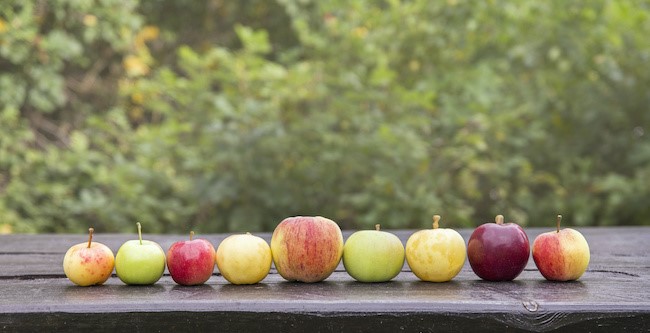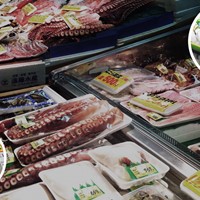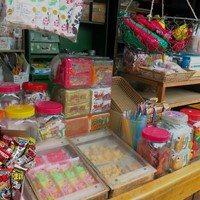Japanese Apples: A Look at What Makes Them So Special

In Japan, apples are very popular as gifts, especially as souvenirs from apple-growing regions. There are many different types of Japanese apples and they often differ from those available in Western countries. Here we will cover some of the best Japanese varieties, their nutrition, and everything you need to know to be up-to-date on apples in Japan.
Japan is also home to a variety of luxury fruits with flawless appearance and delicious taste. You can learn about some of the most well known ones in the article "Japanese Luxury Fruits: The Pursuit of Perfection". If you happen to be in Tokyo, visiting one of the luxury fruit parlors would be an unforgettable experience.
History of Japanese Apple
Apples have a long and extensive history in Japan. It is thought that they originated in Central Asia and spread through Europe and later to the Americas. Throughout this time, apples were much smaller than they are nowadays and were used for cooking, making drinks, and eating fresh.
The first apples in Japan were brought from China in the Heian Period (around 918). They were very small and often used at Buddhist temples as offerings. In 1871, the history of Japanese apples took a big step forward as 75 varieties were imported from the United States.
They were distributed throughout the country and were found to be of particular importance to the northern regions of Aomori, Iwate, and Nagano prefectures as these areas were able to grow apples even in colder weather, when the regions had difficulty growing rice. Over time the initial imported varieties were developed further to increase their sizes, and new varieties were developed through experimentation.
Currently, there are many different varieties produced in Japan. However, there are some similarities even within the differences. One of these is the size. Most Japanese apples are larger than their Western counterparts. They are also generally sweeter. Today, apples in Japan are almost always consumed fresh, rather than being used in various types of cooking as is done overseas. This means the flavor preferences for apples in Japan are on the sweeter side, rather than the acidic and tart flavors such as those found in Granny Smith apples. If you would like to cook some Japanese meals, please check this article for a list of free English websites for Japanese food recipes.
Types of Japanese apples

Fuji Apples

There are many different varieties of Japanese apples, with the majority being produced in the northern prefecture of Aomori. Some of the top varieties include Fuji, which occupies about 50 percent of Japan’s current market share. Fuji apples have become popular across the world because of their crisp texture and sweet taste. They are a crossbreed of two American strains, Red Delicious and Ralls Janet, but have taken on a very individual identity.
Tsugaru Apples
Tsugaru apples hold the second place in Japan’s market share and were also developed in Aomori prefecture, where they are still produced to this day. Tsugaru apples are an early harvest variety that was developed as a hybrid with Golden Delicious apples. They are known as one of the sweetest apples available and do not have much of the acidic tang that we often associate with apples.
Orin Apples
Coming in third is the Orin apple, another Japanese-developed variety that is a combination of the Golden Delicious and Indo varieties. Orin apples are large, green-yellow in color, and very sweet. The taste is often compared to that of pears and even pineapple. They are one of the more versatile Japanese apples as their texture means they can be used for cooking.
Matsu Apples
Mutsu apples are another variety with the same parentage as Orin, yet are much tarter and tangier. This shows some of the experimental nature of apple hybrid development, as the same parentage does not necessarily result in the same hybrid. Aomori, with its Apple Experiment Station has led to some of the most unique and most-loved varieties of Japanese apples, both domestically and abroad.
Japanese Apple's Size

A significant difference between Japanese apples and Western apples is size. Standard apples grown overseas weigh around 150 – 200 grams, while Japanese apples often weigh over 300 grams. This has created a cultural difference in the eating of apples. In many countries, it is common to have a whole apple as part of a lunch or as a snack. They are easy to carry, don’t require any packing and can be eaten as they are. However, in Japan, apples are often shared due to their size, meaning it is normal to cut and peel the apples before eating. They are not as convenient to take for a work or school lunch and so have more of a “special occasion” or “only-at-home” feel to them.
Apples' Nutrition

As a fruit that has been around for thousands of years and has become a standard part of the diet in many countries around the world, it is not surprising that apples are nutritionally useful.
Apples contain dietary fiber which is useful for digestion and improving gut health. The fiber is soluble, meaning it can help with lowering cholesterol and avoiding acid reflux. This soluble fiber also makes apples one of the few fruits that is diabetes-friendly. The solubility slows absorption of sugar into the bloodstream and can improve blood sugar levels. Much of this fiber is contained within the skin, but there is a reasonable amount in the flesh as well.
Apples also may be good at helping to prevent lifestyle-related diseases such as high blood pressure, obesity, and may even help to reduce the risk of stroke, diabetes, and some cancers. Apples are high in vitamin C and antioxidants and so can help support the immune system. They are also able to help with hay fever, plaque production, and even skin appearance. Overall, it is clear that apples are a great addition to any diet.
How to Find the Best Japanese Apples
Apples are a popular fruit across the world, often to the point where we forget to question whether they really are all the same. Japanese apples have significant differences to their Western counterparts that need to be experienced to truly understand.
If you live in Tokyo and would like to try some of the best apples that Japan has to offer, we highly suggest visiting any one of Tokyo’s upscale depachika. There you will not only be able to find the finest produce, but also a variety of other high-end cuisine and food souvenirs. And if you want to make sure that what you put into your body is all-natural, Japan offers several organic food markets. You can find organic food markets in Tokyo in this link. They will be able to satisfy your craving for a crisp delicious Japanese apple.
















